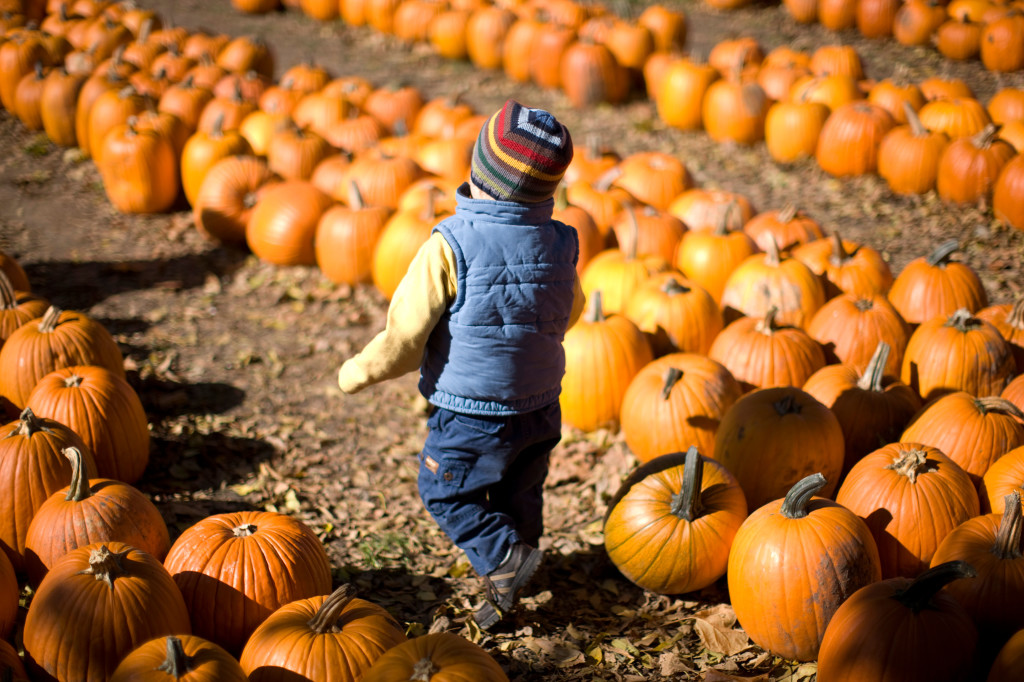October means it’s time for trips to pumpkin patches, ghastly goblin decorations, and candy corns galore. So what better time than now to share this wonderful guest article about getting ready for Halloween by BCBA Claudia Mármol. Claudia shares with us a few tips on how to make dressing up and trick-or-treating as seamless as possible for a child on the spectrum.
_______________________________________________

Wouldn’t it be fun to have your child dress up in their favorite TV character or have them pick up their costume for this Halloween? Most parents would answer “Yes” to the above question, as we all dream of having our child walk down the streets and go trick-or-treating. Thus, as much as children enjoy this holiday, so do adults. However, we have to keep in mind that children with autism and related disorders have sensitivity to certain stimuli such as textures, colors, smells, loud noises, and such that make wearing a typical Halloween costume difficult.
Below, you will find some helpful tips to keep in mind before we try to make our child wear all sorts of costumes, masks, make-up, wigs, and the like:
- Try to avoid masks or anything on their heads: Since children dislike certain textures, their costume should not include anything that will disturb their head and/or skin (such as masks, make-up and/or excessive facial paint, big hats). These also become uncomfortable to carry, fade after a few hours, and can even be a little scary for our little ones, so avoid them as much as possible.
- Make it comfortable: Whether your child will be trick-or-treating or not, make sure that the length of the costume (both legs and arms) is not too long for him/her as to impede their ability to walk and run with their friends. Also, keep in mind the material of the costume and the weather (i.e., avoid materials that will make your child sweat). I would suggest having a cotton costume and having a back-up plan, such as a Halloween-inspired shirt in case your child does not want to remain in his/her costume
- Try it on before it’s that special day: In order to avoid a meltdown on Halloween night, have your child wear his/her costume around the house so that he/she gets used to wearing it and feels comfortable in it. Also choose shoes that your child can comfortably walk in to ensure that he/she will be okay during trick-or-treating.
- Choose something FUN for them: Have your child take part in this special holiday by having them choose what they want to dress up as, but always keeping in mind the above stated. Here are some additional ideas and all-time favorites for Halloween:
- Favorite TV/Movie Characters, such as Disney characters and super heroes.
- Halloween favorites, such as witches, ghosts, wizards, and monsters.
- Others: Animals and insects, such as cats, ladybugs, bees, dogs, and spiders are all simple yet fit the occasion!
Here are other tips to ease the difficulties related to Halloween:
- Practice the trick-or-treating route in advance: In the days leading up to Halloween, walk with your child around your neighborhood and note his/her reaction. If your child feels scared with some decorations that include excessive lighting, have strobes or scary monsters, ghosts, and witches, then you will know to avoid these houses on Halloween.
- Consider alternatives: If your child is not the one to walk around and may not like the Halloween decorations, then you may want to join with other parents so that you can host a Halloween party that is autism-friendly. If you don’t want to host a party, then consider attending a mall, local children museums, or any child friendly location that will have a themed activity.
- It’s okay to stay home: If you think your child will not enjoy the Halloween festivities of going trick-or-treating and dressing up as something, then stay home. You can have your own Halloween fun by watching a movie, creating Halloween-inspired foods together, as well as arts and crafts that will get your child involved (stay tuned for our other post on Halloween Arts & Crafts).
Thus, Halloween should be a fun holiday for all of us! But do know that it can be a scary time for some children, so keep in mind all of the tips discussed above and be aware that comfort is key for your child’s happiness.
WRITTEN BY CLAUDIA MARMOL, BCBA
Claudia Mármol is a Board Certified Behavior Analyst (BCBA) and the founder of Heal the World Behavioral Services, a private ABA center that provides quality ABA therapy to children diagnosed with autism and related disorders in South Florida. Since 2007, Claudia has worked with numerous children of various ethnicities, backgrounds, and related disorders as well as typical children exhibiting problem behaviors in clinical settings, family homes, and schools. Claudia specializes in the development, implementation, and supervision of Verbal Behavior Programs in both English and Spanish.


